The northern lights, or aurora borealis, have enchanted humanity for millennia. Their ethereal dance across the night sky tells a tale as old as time, combining science, legends, and raw natural beauty.
Alaska, with its vast expanses of untouched landscapes and clear skies, stands as one of the world’s premier destinations for aurora chasers.
In this guide, we will unravel the mysteries of the aurora and explore the ins and outs of Alaska’s northern lights cruises. So, print out one of our cruise planners, grab a warm drink, settle in, and let’s set sail on this celestial adventure.

Understanding the Northern Lights
What are the Northern Lights?
The Aurora Borealis, commonly known as the Northern Lights, is not just a beautiful display but also a complex natural phenomenon steeped in science and lore. At its core, this mesmerizing light show is the result of collisions between electrically charged particles from the sun that enter the Earth’s atmosphere.
- The Science Behind the Magic:When solar winds, which are streams of charged particles released from the sun, collide with the gases in our atmosphere, they create the brilliant hues we see dancing across the polar skies. Primarily, when these particles hit oxygen and nitrogen, they produce the familiar green, pink, violet, yellow, blue, and occasionally red curtains of light.
- Cultural and Historical Significance in Alaska:For indigenous peoples of Alaska, the lights have been a part of their stories and beliefs for generations. Different tribes have various legends surrounding the auroras. Some believed they were spirits of the deceased, playing a game in the sky, while others saw them as omens or messages from the gods. These tales, passed down over generations, add a layer of depth and wonder to the experience of watching the lights.

Best Time of Year to See the Lights in Alaska
While the Northern Lights are a year-round phenomenon, not all times are ideal for viewing.
- Winter’s Dark Embrace:The long, dark nights of Alaskan winter, from late September to early April, offer the best opportunities. During these months, Alaska plunges into extended hours of darkness, providing a longer window and higher chances to spot the elusive lights.
- Solar Cycles and Peak Activity:The sun goes through approximately 11-year cycles of solar activity. During periods of peak solar activity, known as solar maxima, auroras are more frequent and vibrant. Tracking these cycles can enhance your chances of catching a spectacular show.

Latitude and Aurora Visibility
The Northern Lights are most prominent in a ring around the poles known as the “auroral oval.” Alaska’s position within this oval makes it one of the best places on Earth to witness the spectacle.
- Prime Locations:Although the whole of Alaska offers potential for aurora viewing, certain areas lie directly beneath this auroral oval, making them hotspots. Towns like Fairbanks are renowned for their consistent aurora sightings. On a cruise, the mobility allows travelers to optimize their position, ensuring the best possible view.
As we sail through this guide, remember that the Northern Lights are a blend of predictability and serendipity. While science and planning enhance your chances, there’s always a touch of magic in every aurora sighting.

Alaska Northern Lights Cruises
The Uniqueness of the Alaskan Experience
Alaska, often referred to as “The Last Frontier,” provides an unparalleled backdrop for witnessing the Northern Lights. Its vast wilderness, majestic mountains, and pristine waters combine to form a breathtaking stage for the aurora’s dance.
- Land Meets Sea:While the lights themselves are a spectacle, their reflection off the icy waters, or their contrast against snowy peaks, creates an ethereal visual feast exclusive to the Alaskan seascape.
- Beyond the Lights:A Northern Lights cruise in Alaska is not just about the auroras. The journey provides glimpses of glaciers, marine wildlife, and the tranquil solitude of the Arctic.

Advantages of Viewing from a Cruise Ship
While there are several ways to chase the Northern Lights, a cruise offers distinct benefits.
- Unobstructed Views:The open sea offers a vast horizon, free from the light pollution of cities and towns. This dark sky environment is ideal for aurora viewing, making every color pop and shimmer.
- Mobility to Chase Clearer Skies:One challenge with the auroras is that they can be obscured by cloud cover. A cruise ship’s mobility allows it to navigate towards clearer skies, increasing the chances of an unspoiled view.
- Comfort and Amenities Onboard:From warm cabins to gourmet meals, cruises offer luxury alongside adventure. Many ships even have specialized programs, with expert talks and presentations about the aurora, enhancing the overall experience.
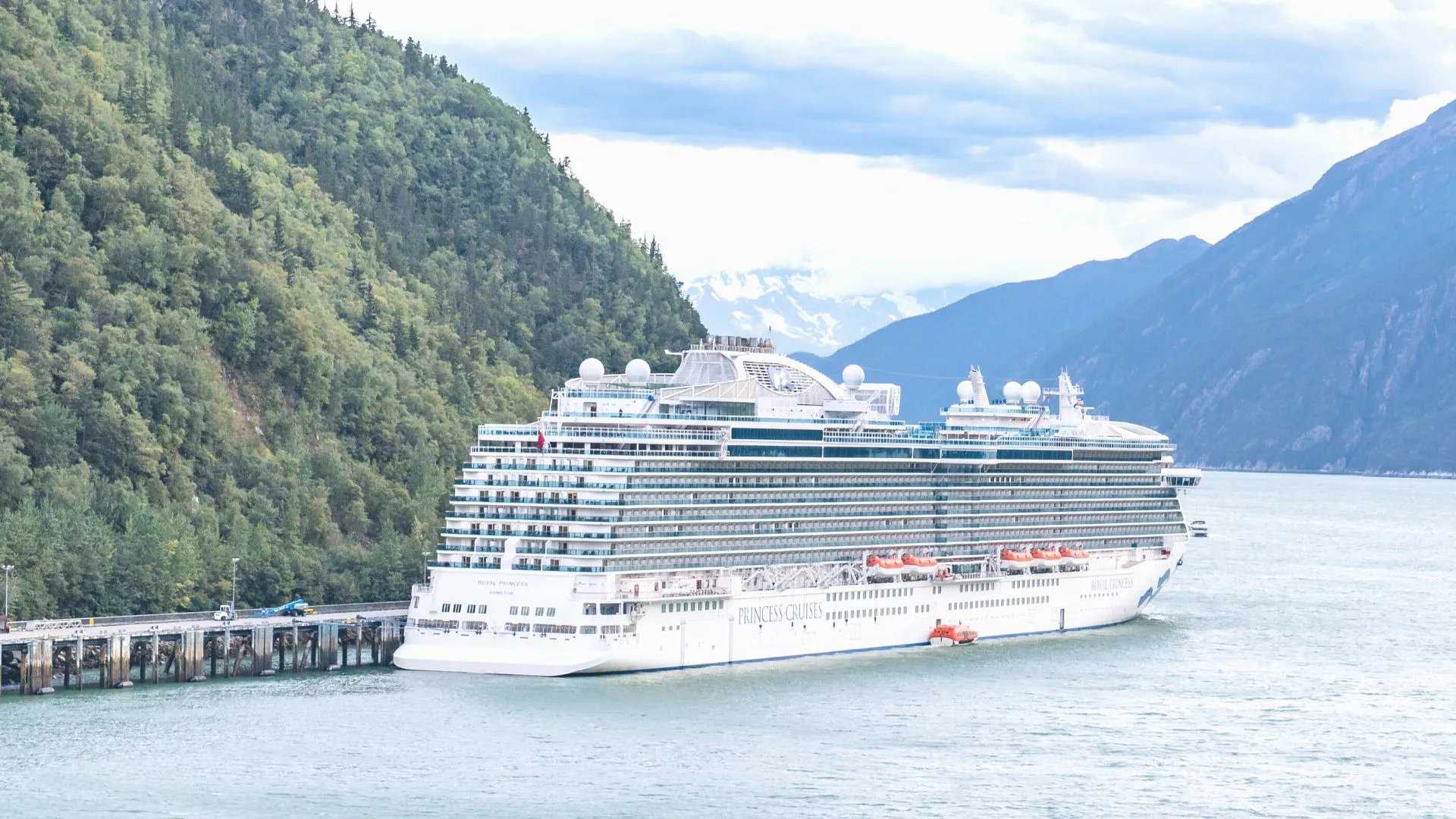
Common Routes and Destinations
While each cruise line may have its unique Alaska cruise itinerary, there are common routes that most Northern Lights cruises in Alaska follow.
- Inside Passage:Starting from cities like Seattle or Vancouver, this route offers stunning views of fjords, wildlife, and coastal towns like Ketchikan and Juneau.
- Gulf of Alaska:Connecting the Inside Passage to the open seas, this route often includes stops at ports like Skagway, Whittier, or Seward, with potential detours to witness tidewater glaciers.
- Bering Sea & Arctic Circle:For the truly adventurous, some cruises venture further north, offering not just enhanced aurora viewing chances but also a deeper dive into the Arctic’s raw beauty.
Selecting the right cruise and route can significantly influence your Northern Lights experience. But no matter the choice, Alaska’s seas promise a journey of wonder, filled with nature’s best spectacles, both in the sky and on the horizon.
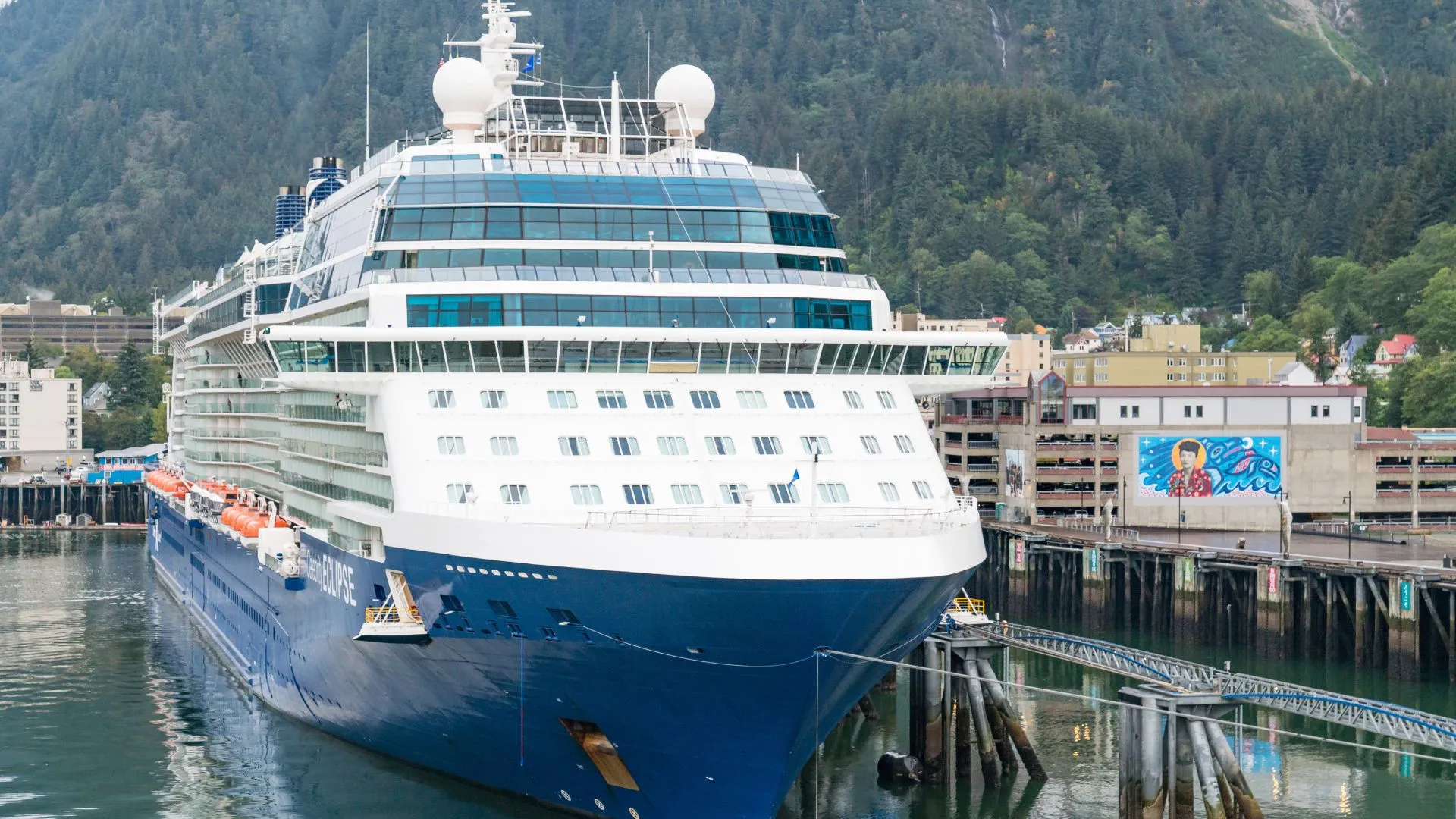
Choosing the Right Cruise
Factors to Consider
Embarking on a Northern Lights cruise in Alaska is a significant commitment, both in terms of time and resources. Making an informed decision ensures you get the most out of this once-in-a-lifetime journey.
- Duration of the Cruise:Alaskan cruises can vary in length, from short 3-day trips to extensive 2-week voyages. Consider how much time you can dedicate and what you hope to see. A longer cruise typically offers a broader range of experiences, from more port stops to increased chances of aurora sightings.
- Size and Type of Ship:Do you prefer the intimacy of a smaller vessel, where you can quickly get to know fellow passengers, or the vast array of amenities in a large cruise liner? Each has its advantages: smaller ships can access more remote areas, while larger ones boast a wider range of facilities and entertainment.
- Onboard Amenities and Activities:From spas and fine dining to expert lectures on the aurora, each cruise offers a distinct onboard experience. Determine which amenities are essential to you and cross-check with potential cruises.

Specialized Northern Lights Cruises vs. Regular Cruises
- Focused Aurora Expeditions:These cruises prioritize Northern Lights viewing. They often include expert guides, nightly alerts for aurora activity, and even workshops on how to photograph the phenomenon.
- Regular Cruises with Potential for Aurora Viewing:While not centered on the Northern Lights, these cruises can still offer fantastic viewing opportunities, especially if they travel during peak aurora season.

Popular Cruise Lines Offering Northern Lights Journeys
Several cruise lines cater to the aurora-seeking traveler, with each providing unique offerings:
- Viking Cruises: Renowned for luxury, Viking offers specialized winter voyages focused on the Northern Lights.
- Holland America Line: With a long history in Alaskan waters, they provide a blend of tradition and comfort.
- Norwegian Cruise Line: Their freestyle cruising concept ensures flexibility, ideal for those who like to tailor their onboard experience.
- Princess Cruises: Their voyages often include “North to Alaska” onboard programs, adding depth to the journey with local guest lecturers and activities.

Best Time of Year
As touched on earlier, the ideal time to witness the Northern Lights in Alaska is during the dark winter months, from late September to early April. However, there are a few more nuances to consider to book the best time for an Alaskan cruise:
- Peak Winter (December – February): The darkest months with the longest nights, thus maximizing your viewing opportunities. However, it’s also the coldest period, so pack accordingly.
- Shoulder Seasons (Late September – November & March – Early April): While days are slightly longer, these months often have clearer skies and milder weather. Plus, cruising during this time might allow you to avoid peak tourist crowds. Check out our September cruise guide for more info!
Choosing the right cruise is akin to personalizing an adventure tailored to your preferences. With a bit of research and introspection, you can ensure that your voyage through Alaskan waters under the shimmering auroras becomes an indelible memory.

Preparing for Your Cruise
What to Pack
Setting sail to witness Alaska’s Northern Lights is thrilling, but ensuring you’re well-equipped can make your experience comfortable and memorable.
-
Appropriate Clothing for Cold Weather
- Layering is Key: Start with thermal base layers, add insulating mid-layers like fleece or down jackets, and finish with a waterproof and windproof outer layer.
- Accessories: Don’t forget gloves, a warm hat, scarves, and thermal socks and to review our top Alaska cruise outfits.
- Footwear: Waterproof, insulated boots are essential for any shore excursions in snowy conditions.
-
Photography Equipment
- Camera and Lenses: A DSLR or mirrorless camera with manual settings, coupled with a fast wide-angle lens (e.g., f/2.8), is ideal for capturing the auroras.
- Tripod: Essential for stabilizing your camera during long exposures.
- Extra Batteries: Cold weather can drain batteries quickly.
- Memory Cards: You’ll be taking lots of pictures; ample storage is crucial.
-
Personal Essentials
- Binoculars: Great for wildlife spotting during the day.
- Medications: Ensure you have enough for the trip’s duration.
- Travel Documents: Passport, cruise tickets, travel insurance, and any necessary visas.
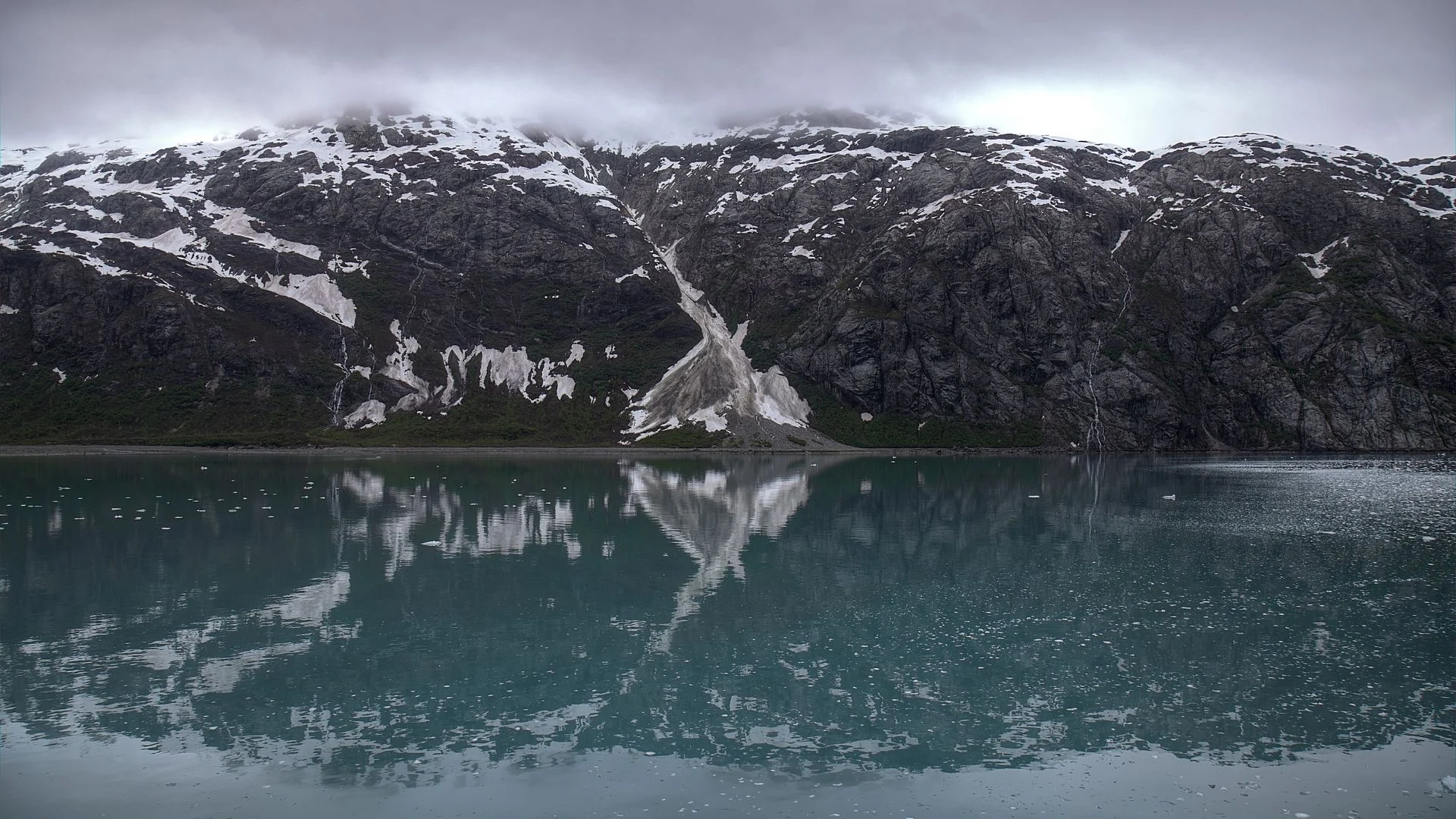
Health and Safety Considerations
-
Seasickness Prevention
- Medication: Over-the-counter remedies like Dramamine can help, but consult a doctor before your trip.
- Natural Remedies: Ginger tablets or wristbands that apply pressure to acupressure points can also be effective.
- Choose Your Cabin Wisely: Midship cabins on lower decks often experience less motion.
-
Cold Weather Precautions
- Stay Dry: Wet clothing loses its insulating properties, so always remove damp layers.
- Limit Alcohol Consumption: Alcohol can give a false sense of warmth and impair judgment related to cold exposure.
- Know the Signs of Frostbite and Hypothermia: Early detection and response are vital.

Pre-Cruise Research and Resources
- Cruise Itinerary: Familiarize yourself with the ship’s planned stops, activities, and onboard events to optimize your time.
- Aurora Forecasts: Apps and websites, like the Aurora Forecast or the University of Alaska’s Geophysical Institute forecast, can help you anticipate the lights’ activity.
- Local Culture and History: Delve into the stories, traditions, and histories of the Alaskan towns and indigenous communities you’ll visit. This enriches your shore excursions and interactions.
As the adage goes, “Preparation is half the battle.” By equipping yourself with the essentials and knowledge, you’re setting the stage for a seamless, unforgettable journey through Alaska’s icy waters and shimmering skies.

Enhancing Your Northern Lights Viewing Experience
Positioning Onboard
Where you stand on the cruise ship can influence your aurora viewing experience.
- Away from Ship Lights: Opt for areas with minimal artificial lighting. This ensures your eyes adjust to the darkness and can pick up on the subtle movements and colors of the aurora.
- Stable Spots: The ship’s center is generally more stable, which can be especially helpful if you’re setting up a tripod for photography.
- Open Decks: Upper open decks provide a more panoramic view of the sky, free from obstructions.

Tools and Technologies
- Aurora Alert Apps: These apps can notify you of heightened aurora activity, ensuring you don’t miss a spontaneous light display while you’re asleep or engaged in other activities.
- Night Vision Monoculars or Binoculars: These can help in viewing the finer details of the aurora, especially when the display is faint.
- Star-Gazing Apps: Enhance your night sky experience by identifying stars, planets, and constellations.

Aurora Photography Tips
- Use Manual Settings: Automating won’t work well for auroras. Adjust settings manually, focusing on a wide aperture (like f/2.8) and a long exposure.
- ISO Setting: Start with ISO 1600 and adjust based on the brightness of the aurora and ambient light.
- Focus on Infinity: Autofocus often struggles in the dark. Manually set your lens to infinity (∞) and adjust slightly if needed.
- Experiment and Be Patient: The aurora is unpredictable. Continually adjust settings and take multiple shots.
- Capture Foreground Elements: Including a piece of the ship, icebergs, or distant land can add depth and scale to your images.

Cultural Respect and Engagement
- Engage with Indigenous Narratives: Onboard lectures or local guides at port stops might share indigenous stories and interpretations of the aurora. Engaging with these tales enhances appreciation and respect for the cultural significance of the lights.
- Participate in Onboard Events: Some cruises might organize special events during anticipated aurora displays, such as storytelling sessions, themed dinners, or music performances that resonate with the magic of the lights.

- Connect with Fellow Travelers: Sharing the experience can be enriching. Swapping stories, tips, and viewpoints can lead to lasting memories and friendships.
- Share Through Social Media: While living in the moment is essential, sharing snippets of your journey can inspire others and create a digital journal of your experiences.
Witnessing the Northern Lights is an ethereal experience, but with a touch of preparation, creativity, and respect, you can elevate it from a mere sighting to a profound, soul-stirring encounter.
The dance of colors in the sky isn’t just a natural phenomenon; it’s a testament to the universe’s beauty and wonder. Embrace every moment.
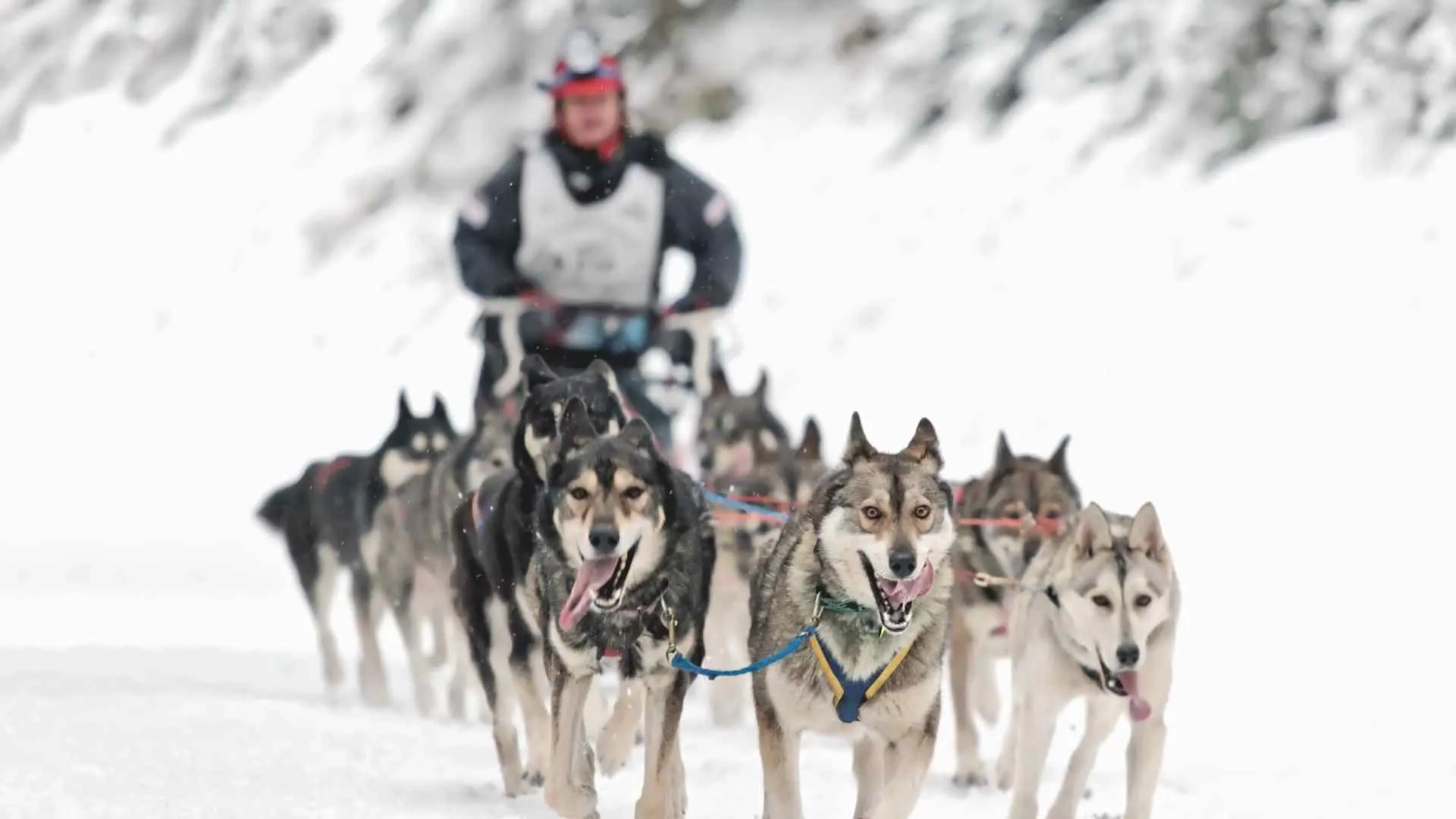
Additional Alaskan Experiences to Consider
Alaska is more than just a stage for the Northern Lights. It’s a vast wilderness teeming with unique adventures and unforgettable sights. To make the most of your trip, consider incorporating some of these best excursions on Alaska cruises:
Wildlife Excursions
- Whale Watching: Especially prevalent in the Inside Passage, you can spot orcas, humpback whales, and gray whales, depending on the season.
- Bear Spotting: Coastal areas often offer opportunities to see brown bears fishing for salmon or black bears roaming the shores.
- Birdwatching: With numerous species, from bald eagles to puffins, Alaska is a bird-lover’s paradise.

Glacier Adventures
- Glacier Flightseeing: Hop on a small plane or helicopter to witness the grandeur of glaciers from the skies.
- Glacier Hiking or Ice Climbing: For the adventurous, some excursions allow you to walk or climb on glaciers with the aid of experienced guides.
- Visit Glacier Bay National Park: A UNESCO World Heritage site, it’s home to a dynamic glacial landscape.

Cultural and Historical Exploration
- Indigenous Heritage Centers: Learn about the rich histories and traditions of Alaska’s native peoples.
- Gold Rush History: Places like Skagway offer a peek into the Gold Rush era, with preserved buildings and historical reenactments.
- Museums and Art Galleries: Explore Alaskan art, history, and culture in cities like Juneau or Anchorage.

Fishing Adventures
- Salmon Fishing: Try your hand at catching king, silver, or sockeye salmon in Alaska’s pristine waters.
- Deep-Sea Fishing: For those seeking larger catches, halibut fishing can be an exciting venture.

Outdoor Activities
- Hiking and Trekking: Alaska boasts numerous trails, ranging from leisurely walks to challenging mountain treks.
- Kayaking or Canoeing: Paddle through serene fjords or alongside massive glaciers in places like Valdez or Ketchikan.
- Dog Sledding: In winter, experience the thrill of a dog sled ride or even visit a musher’s camp to understand this iconic Alaskan tradition.
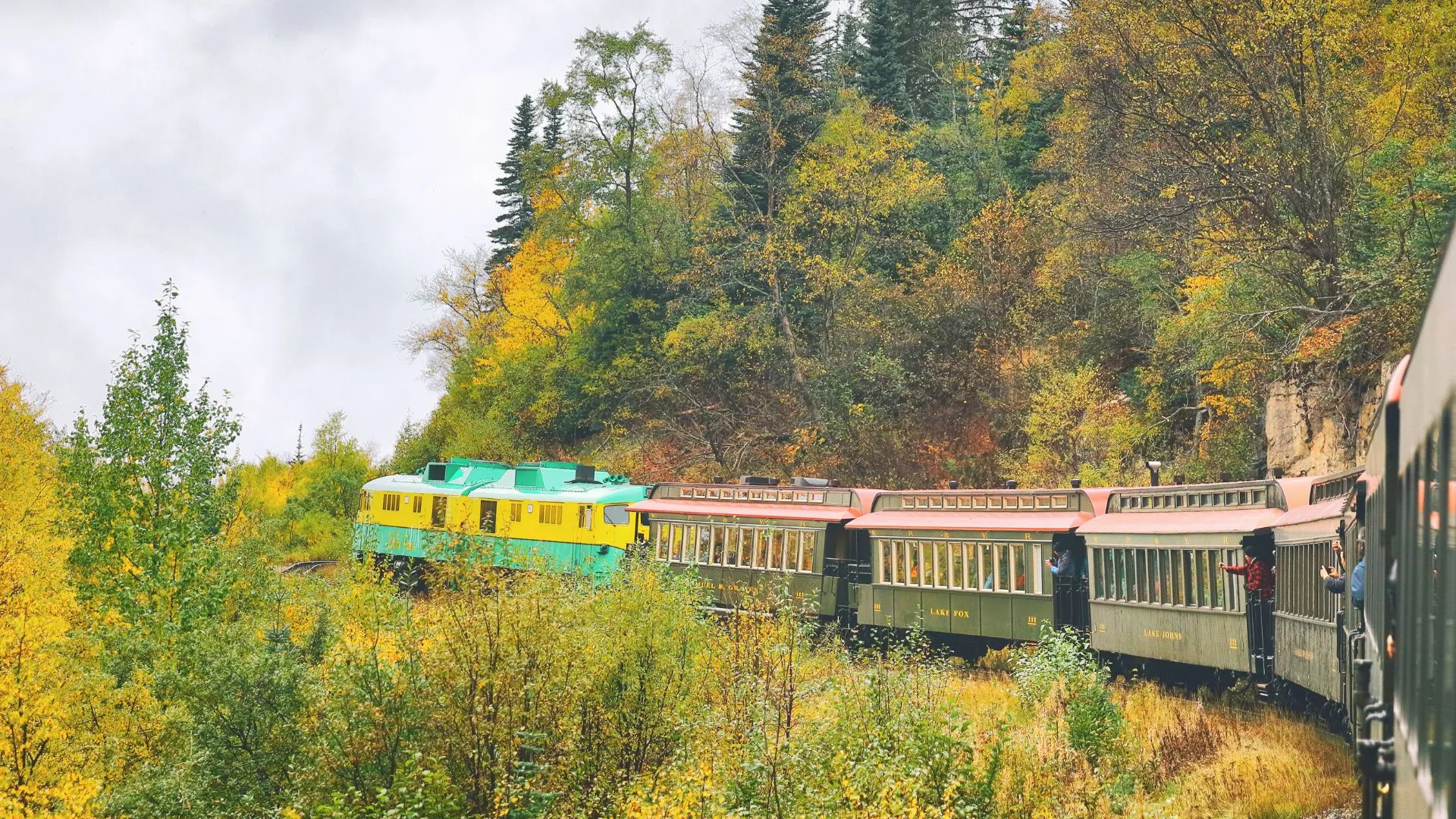
Scenic Drives and Train Rides
- Alaska Railroad: Offering panoramic views, this train ride connects Anchorage, Talkeetna, Denali, and Fairbanks.
- Drive the Seward Highway: One of the most scenic drives in the U.S., it offers views of mountains, glaciers, and the coastline.

Local Cuisine
- Seafood Delights: Indulge in fresh salmon, halibut, king crab, and more. Don’t miss the clam chowder or seafood bisques.
- Breweries and Distilleries: Sample Alaskan craft beers or spirits, each with its unique local twist.
Alaska is a vast tapestry of experiences waiting to be explored. While the Northern Lights might be the star attraction, the state offers countless other wonders that resonate with its wild spirit and cultural richness. Your Alaskan adventure can be as diverse and enriching as you choose to make it.

Other Options Besides Alaska
While Alaska is undeniably a prime location for Northern Lights cruises, the aurora borealis graces other parts of the world too. If you’re eager to chase this mesmerizing phenomenon elsewhere, consider the following destinations:
Norway
- Tromsø: Often dubbed the “Paris of the North,” Tromsø is a bustling city located well within the Arctic Circle. Many Northern Lights cruises embark from here, traveling along Norway’s rugged coastline.
- Hurtigruten Voyage: This iconic coastal voyage travels from Bergen to Kirkenes, offering spectacular fjord scenery and prime aurora viewing opportunities.
- Lofoten Islands: This dramatic archipelago offers a stunning backdrop for the lights, with towering mountains and quaint fishing villages.

Iceland
- Reykjavik: While you can spot the Northern Lights from the Icelandic capital, many cruises set sail from here to escape the light pollution and explore the country’s wild coastline.
- Westfjords: This remote region is an excellent place to view the aurora, away from the crowds.

Greenland
- Disko Bay: Cruising in this bay not only promises incredible aurora views but also massive icebergs and a taste of Greenland’s Inuit culture.
- Nuuk: The capital city is a departure point for cruises that explore Greenland’s rugged coastline and remote villages.

Canada
- Churchill, Manitoba: While more famous for polar bears, this remote town also offers specialized aurora tours, some of which are boat-based on the Hudson Bay.
- Yellowknife: Located on the northern shores of Great Slave Lake in Canada’s Northwest Territories, Yellowknife is a prime spot for aurora viewing. While not traditionally a “cruise” destination, there are boat tours on the lake for aurora watching.

Russia
- Murmansk: Located in the Russian Arctic, Murmansk is a hub for Northern Lights enthusiasts. Cruises here can offer a unique blend of Russian culture and spectacular aurora displays.
- Yamal Peninsula: Venture deep into the Siberian Arctic on specialized expeditions. This region promises both cultural immersion with indigenous Nenets people and impressive aurora sights.

Scotland
- Shetland and Orkney Islands: These remote Scottish islands offer a chance to view the Northern Lights, especially during the winter months. Cruises here combine rich history, rugged landscapes, and potential aurora sightings.

Finland
- Kemi: The town of Kemi, situated by the Gulf of Bothnia, is known for its icebreaker cruises. While these cruises are primarily about breaking through the frozen sea, they also offer a unique setting for Northern Lights viewing.
Remember, while all these destinations provide potential sightings of the Northern Lights, the natural phenomenon remains unpredictable. Still, the journey through these pristine, remote landscapes coupled with the anticipation of an aurora display makes for an unforgettable experience.

Conclusion
As the ethereal dance of the Northern Lights illuminates the night sky, it’s clear why this natural spectacle has captivated the human imagination for centuries. Whether you’re nestled amid Alaska’s vast wilderness or sailing through Norway’s dramatic fjords, the experience of witnessing the aurora borealis from the deck of a cruise ship is nothing short of magical.
But as we’ve explored, the Northern Lights are but one facet of the allure these destinations offer. From Alaska’s towering glaciers and rich indigenous culture to Norway’s picturesque coastal towns and the untouched beauty of Greenland, the journey to see the aurora can be as rewarding as the destination itself.
Choosing the right cruise, preparing adequately, and embracing all the adventures en route ensures not just a glimpse of this celestial marvel but a comprehensive, enriching travel experience. As you embark on this luminous journey, remember that while the Northern Lights may be the highlight, the stories you gather, the people you meet, and the landscapes you traverse will weave an unforgettable tapestry of memories.
In the words of Roald Dahl, “Those who don’t believe in magic will never find it.” So, set sail, look skywards, and let the wonders of the world enchant you. Safe travels and clear skies!
FAQs on Alaska Northern Lights Cruises
1. What are the Northern Lights?
The Northern Lights, also known as the aurora borealis, are a natural light display predominantly seen in high-latitude regions around the Arctic and Antarctic. They result from charged particles from the sun colliding with the Earth’s atmosphere, producing colorful displays of green, pink, purple, red, and blue lights.
2. When is the best time to see the Northern Lights in Alaska?
The prime season for Northern Lights viewing in Alaska is between late September and early April. Dark, clear nights provide the best conditions.
3. How likely am I to see the Northern Lights on my cruise?
While cruises optimize the chances by navigating to areas with minimal light pollution and frequently clear skies, the Northern Lights remain a natural and unpredictable phenomenon. It’s never a guarantee but following expert predictions and being prepared can enhance your chances.
4. What should I wear while watching the aurora on deck?
The Alaskan nights can be frigid. It’s essential to wear layers, including thermal underwear, a warm middle layer, a waterproof and windproof outer layer, insulated boots, gloves, a hat, and a scarf.
5. Are there any specific Northern Lights cruises?
Yes, several cruise lines offer itineraries specifically tailored for aurora viewing, often incorporating experts, lectures, and workshops related to the phenomenon.
6. Can I photograph the Northern Lights from the cruise ship?
Absolutely! A tripod will help stabilize your camera on the moving ship. Use manual settings, a wide aperture, long exposure, and a higher ISO. Experiment to get the best shot.
7. Is there a best side of the ship to view the aurora from?
The Northern Lights can appear anywhere in the sky, so it’s not strictly about choosing a side. However, finding a spot with minimal light interference from the ship is crucial. Upper open decks with a 360-degree view can be ideal.
8. How long do the Northern Lights displays typically last?
The duration varies. Some displays may last for a few minutes, while intense activity can continue for hours.
9. Are there any onboard amenities that can enhance my viewing experience?
Many ships offer heated outdoor areas, loungers, and even blankets for comfort. Some may have specialized lounges with panoramic windows. Onboard experts, aurora alert systems, and photography workshops can further enhance the experience.
10. Is Alaska the only place to see the Northern Lights?
While Alaska is a prime location, the Northern Lights can also be seen from other high-latitude areas like Canada, Scandinavia, Greenland, and Russia.
11. Will I experience seasickness on the cruise?
It varies from person to person. However, ships traversing Alaskan waters are equipped with stabilizers to minimize motion. If prone to seasickness, consult your doctor for recommended medications or remedies.
12. Are there any cultural or indigenous perspectives on the Northern Lights I can learn about during my cruise?
Many Alaskan cruises incorporate indigenous narratives and folklore about the aurora. Engaging with these stories enriches the experience, providing a cultural context to the natural marvel.
13. What other activities can I expect on a Northern Lights cruise in Alaska?
Besides aurora watching, you can expect wildlife excursions, glacier tours, cultural and historical site visits, onboard lectures, workshops, and more.
14. Is a balcony cabin worth it for Northern Lights viewing?
A balcony cabin offers privacy and a personal space for viewing. However, the aurora can appear in any direction, so the ship’s open decks, which offer broader views, are generally preferable.
15. How do I prepare for an Alaskan Northern Lights cruise?
Research, pack appropriately for cold weather, bring necessary photography equipment, familiarize yourself with the ship’s amenities, and remain flexible in your expectations given the unpredictable nature of the aurora.
16. Can I experience the Northern Lights even if I don’t go on a cruise?
Absolutely! While cruises offer a unique perspective, many land-based locations in Alaska, such as Fairbanks, offer excellent opportunities for aurora viewing, often paired with other activities like hot springs or dog sledding.
17. What’s the difference between the aurora borealis and the aurora australis?
The aurora borealis is the Northern Lights, visible in the Northern Hemisphere. The aurora australis, or Southern Lights, are the equivalent phenomenon in the Southern Hemisphere, visible in places like Antarctica, parts of Australia, and New Zealand.
18. Can the Northern Lights affect electronic equipment?
Generally, the Northern Lights themselves do not affect electronic equipment. However, solar storms that enhance aurora activity can, in extreme cases, interfere with satellite and communication systems.
19. How do ships communicate aurora sightings to passengers?
Most ships operating Northern Lights cruises have an aurora alert system. This might be a shipwide announcement, a special buzzer in the cabins, or even a wake-up call if you request it.
20. Are there specific months that have higher aurora activity?
While the Northern Lights can be seen from late September to early April in Alaska, the equinox months – September and March – often have higher geomagnetic activity, which can lead to more vivid auroras.
21. Is there any safety concern while watching the aurora from the cruise ship’s deck?
Always be aware of the ship’s movement and any wet or icy patches on the deck. It’s advisable to wear shoes with good grip and to use handrails when moving around.
22. Will the cold affect my camera or smartphone while photographing the aurora?
Extreme cold can reduce battery life, so bring spare batteries and keep them warm in your pockets when not in use. Some electronics might also become sluggish or unresponsive in the cold.
23. Are there any apps or websites to predict aurora activity?
Yes, there are several apps and websites that provide real-time and forecast data on aurora activity. Some popular options include the Aurora Forecast, Space Weather Live, and the NOAA Space Weather Prediction Center.
24. What’s the science behind the colors of the Northern Lights?
The colors are determined by the type of gas particles colliding and the altitude at which the collision occurs. Oxygen at higher altitudes can emit red hues, while at lower altitudes, it can give off green colors. Nitrogen can produce purples, blues, and pinks.
25. I have mobility issues. Can I still enjoy the Northern Lights on a cruise?
Many cruise ships are equipped to cater to passengers with mobility issues, offering accessible areas from which you can view the aurora. It’s essential to discuss any requirements with the cruise line ahead of booking.
26. Are children likely to enjoy the Northern Lights cruise experience?
While the aurora is a spectacle for all ages, consider the late-night hours and colder temperatures. Some cruise lines offer kid-friendly programs and activities to engage younger travelers during the trip.
27. Can the full moon hinder the Northern Lights viewing experience?
Bright moonlight can diminish the contrast of the aurora against the night sky, making them less vivid. However, the Northern Lights can still be enjoyed during a full moon, especially if the activity level is high.
28. Do all Alaska cruises guarantee Northern Lights sightings?
No cruise can guarantee sightings as the aurora is a natural and unpredictable phenomenon. However, cruises specifically tailored for aurora viewing will optimize the chances by choosing routes and timings with historically higher success rates.
Remember, while these FAQs provide a broad overview, each traveler’s experience is unique. Personal research, consultation with cruise experts, and maintaining flexibility in expectations can ensure an enriching and memorable Northern Lights journey.
